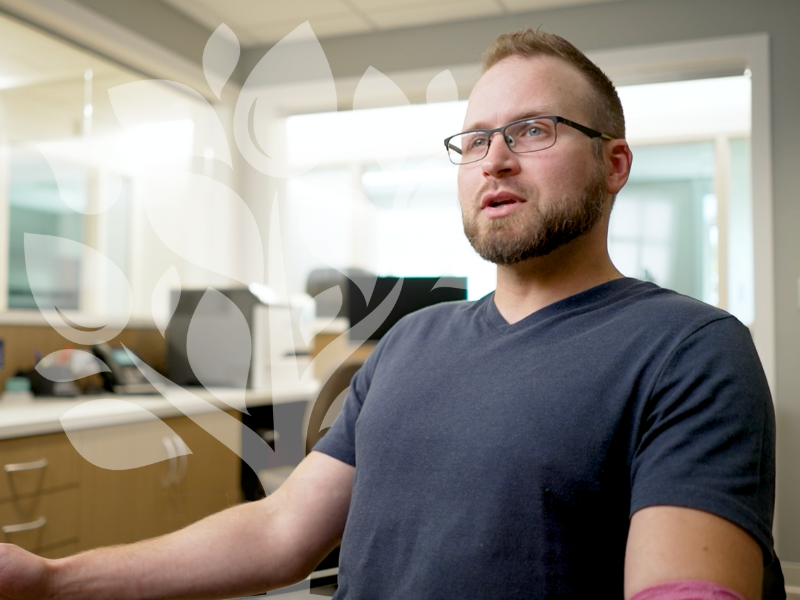Hereditary Hemorrhagic Telangiectasia (HHT), also known as Osler-Weber-Rendu syndrome, is a genetic disorder that affects blood vessels. People with HHT often develop abnormal blood vessels called telangiectasias and arteriovenous malformations (AVMs) that can cause bleeding, especially in the nose and gastrointestinal tract. Managing HHT effectively requires a comprehensive understanding of the disease and the latest treatment options.
Current Treatments for HHT Disease
There are several established treatment options for HHT, each tailored to address specific symptoms and complications:
- Laser Therapy
- Laser therapy is a commonly used treatment to manage telangiectasias on the skin and mucous membranes, including those in the nose. The procedure involves using focused light to seal off abnormal blood vessels, reducing the risk of bleeding. Laser therapy is generally well-tolerated and can be performed in an outpatient setting. Regular treatments may be required to maintain the benefits, especially for recurrent nosebleeds.
- Embolization
- Embolization is a minimally invasive procedure used to treat larger AVMs, particularly those in the lungs, brain, and liver. During the procedure, a catheter is guided to the abnormal blood vessel, and embolic agents (such as coils or particles) are injected to block the blood flow. This reduces the risk of bleeding and prevents complications associated with AVMs. Embolization is often performed by interventional radiologists and may require follow-up procedures to ensure long-term effectiveness.
- Medications
- Medications play a crucial role in managing HHT symptoms. Antifibrinolytic agents, such as tranexamic acid, help reduce bleeding by preventing the breakdown of blood clots. Additionally, medications like estrogen-progesterone hormone therapy can help manage severe nosebleeds by stabilizing blood vessels. Systemic treatments may be needed for patients with widespread telangiectasias or significant bleeding.
- Surgery
- Surgery may be necessary for patients with severe or life-threatening complications. Surgical options include removing large AVMs or performing septodermoplasty, a procedure that replaces the nasal lining with a skin graft to reduce nosebleeds. Surgical interventions are typically reserved for cases where other treatments have failed or are not feasible. Preoperative planning and postoperative care are critical to minimizing risks and ensuring successful outcomes.

Innovations in HHT Disease Treatment
Recent advancements in HHT treatment focus on innovative therapies and improving patient outcomes:
- Bevacizumab (Avastin)
- Bevacizumab, a monoclonal antibody originally used to treat cancer, has shown promise in reducing bleeding in HHT patients. It works by inhibiting vascular endothelial growth factor (VEGF), a protein that promotes the growth of abnormal blood vessels. Clinical studies have demonstrated that bevacizumab can significantly reduce the frequency and severity of nosebleeds and improve overall quality of life. Treatment with bevacizumab may involve intravenous infusions administered at regular intervals.
- Sirolimus (Rapamycin)
- Sirolimus is another drug under investigation for HHT treatment. It targets the mTOR pathway, which is involved in cell growth and angiogenesis. By inhibiting this pathway, sirolimus can reduce the formation of abnormal blood vessels. Early research suggests that sirolimus may help stabilize blood vessel growth and reduce bleeding episodes. Clinical trials are ongoing to determine the optimal dosing and long-term safety of sirolimus for HHT patients.
- Gene Therapy
- Gene therapy is an emerging field that aims to correct the genetic mutations responsible for HHT. This approach involves using viral vectors to deliver a functional copy of the HHT-related gene (such as ENG or ACVRL1) into the patient’s cells. The goal is to enable the body to produce normal blood vessels, potentially providing a long-term cure. While still in the experimental stages, gene therapy has shown promise in preclinical models, and clinical trials are underway to evaluate its safety and efficacy in humans.
- Hormonal Therapy
- Hormonal therapy plays a significant role in managing HHT-related nosebleeds. Tamoxifen, an estrogen receptor modulator, has been used to reduce the frequency and severity of nosebleeds in HHT patients. Tamoxifen works by altering the hormonal balance that affects blood vessel stability. Studies have shown that tamoxifen can be effective in reducing bleeding episodes and improving patient outcomes. Hormonal therapy may be particularly beneficial for female patients experiencing heavy menstrual bleeding and other hormone-related symptoms.
- Personalized Medicine
- Advances in genetic research and data analysis are paving the way for personalized treatment plans tailored to individual patients’ genetic profiles. Personalized medicine involves analyzing a patient’s specific genetic mutations, clotting factor levels, and response to different treatments. This information is used to develop a customized treatment plan that optimizes efficacy and minimizes side effects. For example, patients with certain genetic variations may respond better to specific types of VWF concentrates or dosing regimens. Personalized medicine also incorporates pharmacogenomics, which studies how a patient’s genetic makeup influences their response to medications. By tailoring treatments to each patient’s unique genetic profile, personalized medicine aims to improve clinical outcomes and enhance the overall management of HHT.
Treatment for HHT Nosebleeds
Nosebleeds, or epistaxis, are a common and challenging symptom of HHT. Effective treatment options for HHT nosebleeds include:
- Nasal Packing
- Nasal packing involves placing materials inside the nose to apply pressure and stop bleeding. This is often used as an immediate response to severe nosebleeds.
- Nasal Cauterization
- Nasal cauterization uses heat or chemicals to seal bleeding blood vessels. This procedure is commonly performed in an outpatient setting and can provide significant relief for patients with frequent nosebleeds.
- Topical Treatments
- Topical treatments such as antifibrinolytic agents (e.g., tranexamic acid) and hormone-based creams can help reduce the frequency and severity of nosebleeds. These treatments are applied directly to the nasal mucosa to promote healing and prevent further bleeding.
Conclusion
Managing Hereditary Hemorrhagic Telangiectasia (HHT) requires a comprehensive approach that includes both current treatments and innovative therapies. From laser therapy and embolization to cutting-edge drugs like bevacizumab and sirolimus, patients have multiple options to manage their symptoms effectively. Hormonal treatments like tamoxifen offer additional relief, particularly for nosebleeds. Organizations like Cure HHT continue to support research and patient care, striving towards improved treatments and a potential cure for HHT.
For those seeking expert care, the Hemophilia Outreach Center (HOC) provides comprehensive treatment and support for individuals with bleeding disorders, including HHT. With locations in Green Bay and Wausau, HOC offers personalized care plans, educational resources, and access to the latest advancements in treatment. The center’s multidisciplinary team includes hematologists, genetic counselors, physical therapists, and more, ensuring holistic care for patients and their families. To learn more about the services offered at HOC and how they can help manage HHT effectively, visit Hemophilia Outreach Center.




